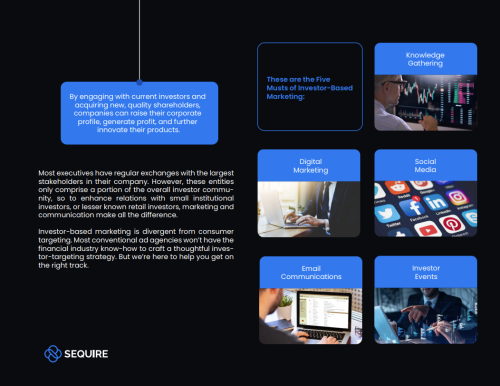Artificial intelligence (AI) is changing the investor relations dynamic. Through the phenomenon of generative AI programs such as ChatGPT, IR professionals can answer complicated questions an investor may have in a matter of minutes. But while AI can enhance the role of IR professionals, they must first understand how to use it and – more importantly – when to do so.
With AI taking center stage across the world, this new rush in technological advancement has prompted more companies to start experimenting with it. Top dogs like Google, Amazon and HSBC have already started to implement AI more prominently across their businesses. Most notably, Andy Jassy, Amazon’s CEO, said he expects the company to be the next leader in generative AI and is already investing heavily in it.
In a recent Cambridge University study it found that across the entire sample, which consisted of 151 financial institutions from over 30 countries, 85 percent of all respondents had implemented AI in some way. Out of all financial service sectors, investment managers were the leading adopters of AI at 52 percent, with a whopping 95 percent expected to harness AI capabilities within the next two years.
While AI can provide a shortcut through everyday menial tasks, some IROs are still cautious about joining this new technological wave. To help IR professionals understand AI better, Christoph Greitemann, head of investor relations at Deutsche Telekom, advises people to view it as a colleague who helps out daily instead of as a new tool that may be hard to get to grips with.

Viewing AI as a colleague can add a level of understanding that the technology is something helpful rather than a hindrance, he says: ‘AI is just a colleague: imagine that you give a junior colleague challenging tasks but that junior would not be responsible. That for me is the appropriate frame in which to think about AI.
‘If the junior sent out something by himself/herself, there should be his/her signature saying it’s from him/her. But if that junior is just preparing an email for you that you then see and add to, it wouldn’t make sense to sign his/her name to it.’
The IR practicalities of AI
The breadth of AI is only just starting to unfold, revealing some of the practical uses it might offer the IR professional. Gregg Lampf, vice president of IR at telecommunications company Ciena, says AI has already become part of his day-to-day work.
‘One way I’m using generative AI is by summarizing large pieces of content, different types of reports in a much quicker timeframe,’ he explains. ‘If I had done it myself it would have taken at least a day or more but with AI it takes me maybe half an hour.’

Nimesh Davé, president of Notified, predicts that AI will eventually become part of the IR role’s toolkit. ‘It’s going to augment what IROs do,’ he says. ‘It’s going to make their application of technology and their ability to give answers that are customized to investor segments much more powerful.’
This is an extension of the investor relations toolkit, he adds: ‘Just like we have operator-assisted calls and press releases, this is going to be an augmentation, not a replacement. It’s going to make IROs’ capabilities significantly more powerful regarding [how they deal with] specific investor groups and stakeholders.’

Evolving the IR role
When thinking about how AI can evolve the IR role, Darrell Heaps, CEO of Q4, says it’s all about AI’s ability to focus on all the things that are not relationship-linked, ‘all the tactical elements, the administrative aspects, the kind of high-level analysis. Being able to automate all that so that IROs and their teams can focus more on the relationship side just made it starkly clear about what the future of this business looks like, which is about the machines.
‘AI doesn’t replace the human element: it enables teams to have much more capacity to focus on what matters most, which is the relationships they have with their current and – hopefully – new investors.’

For James Tickner, global head of product and IR intelligence at Nasdaq, AI had already been an integral part of the IR role years before the hype it is now receiving. ’The reality is that AI has played a role in IR for many years,’ he says. ‘Generative AI can potentially create better insights and data on the investment community and the capital markets. Its ability to summarize market events, for example, has real application for IR teams and can help keep executive teams well informed on capital markets events.
‘And then, of course, you think about the tools people use: whether that’s algorithmic tools for investment targeting or sentiment-type engines for earnings analysis, a lot of that is already here. Clearly, there’s been some big advancements in generative AI specifically, and that is what a lot of the excitement is around.’
Regulation
One of the biggest pieces of regulation unfolding this year is the EU Artificial Intelligence Act, which looks to safely harness the use of AI across Europe. The act will look to impose a tiered and risk-based approach to regulation. As part of its digital strategy, the EU wants to regulate AI to ensure better conditions for the development and use of this innovative technology.

Depending on which risk category the AI system falls into, the regulation would do one of four things: permit its unrestricted use, permit it with some obligations, permit it only if the systems are subject to compliance with AI requirements or prohibit it. One of the main points of the regulation is the need for disclosures to avoid misleading customers, users or clients.
Lampf explains that on certain occasions when he sends out an internal peer earnings summary report in which AI has been used to collate information, he will disclose this to the recipient. ‘I make sure to include a ChatGPT summary section because I think that’s appropriate,’ he says. ‘As a society, as generative AI content proliferates, I think one of the things we can consider is identifying that something is generated by AI – or the opposite, that it is a human-generated piece of content.’
Greitemann agrees there should be disclosure on AI-generated content but only in instances where it is published without the clearance or modification of a human being. He suggests that if a human is clearing or modifying the content, it should be attributed to the human being, not the AI.
‘I’m sure AI will transform the day-to-day work of investor relations managers, fundamentally. If you ignore AI, it’s a threat but if you embrace it, it’s a big, big opportunity,’ he concludes.
Multi-purpose use
AI can be used for multiple purposes, notes Davé. ‘I think it’s very early in the governance cycle so it’s hard to say what will happen with it, but I think you do need to use AI responsibly,’ he explains. ‘You need to think about AI as two different strands: AI in the public domain and AI in the private one.’
Sylvie Harton, chief business strategy officer at Lumi Global, a virtual technology provider, explains how AI has the potential to improve transparency. ‘Whether for employees, customers, regulators or investors, I think AI has the capacity to improve transparency by providing organizations with insight in terms of the sentiment of their stakeholders,’ she points out.

Offering AGMs as an example, Harton says AI can be used during voting to understand the sentiment of stakeholders and provide companies with some insight in terms of how they could potentially respond to questions. AI is also applicable to earnings calls or investor days where it can be used to understand the level of audience engagement, she adds.
As AI evolves it will start to move higher up the business chain and eventually enter the boardroom, Davé predicts. ‘I believe it’s going to be the first time where IR professionals will get a larger portion of the budget to be able to communicate not only with the institutional investors and understand sentiment by using AI tools, but also to communicate with the retail shareholder base, which is really changing with a new generation of investors,’ he says.
Understanding AI
When dealing with AI tools, it’s all about delegating tasks to the system that can ultimately improve the IR role, Greitemann says. But in order to delegate tasks, IROs need to understand and know what the skills of the AI system are.
‘You need to know how to instruct this system in exactly the same way you would as a team leader: you need to know who in your team has which skills and who needs what kind of instruction,’ he explains.
One of the challenges of generative AI tools is that they have a very wide and shallow range, rather than a narrow and deep focus, Tickner says. Discussing how Nasdaq can incorporate AI more efficiently, he explains the importance for his team to look at these tools and their uses.
‘What is the training data with generative AI?’ he asks. ‘What data is going into the model? Is that relevant? How is this model fine-tuned? Was it by subject matter experts? And of course, beyond that, there are two other things that are extremely important: the design of the user experience and the controls in place for things such as intellectual property.’
When trying to understand AI, the first thing IROs need to know is that they shouldn’t rely too much on it, Tickner says: ‘This is very much that copilot concept people have talked about. It will take you some way down the field, but it will never get you all the way there. Overall, I would encourage people to think of this as an enormous opportunity to elevate the IR role.’
Impact of AI
Lampf encourages IROs who are still skeptical about using AI to get on board now, while it’s still maturing. ‘This is one of those truly transformational technologies that if you wait until it’s polished, you’re not going to have all the institutional knowledge of trying things,’ he notes.
He believes AI replacing the role of an IR professional is not something that will happen. But if IROs are unwilling to experiment with the new technology, their role could ‘very well be diminished by someone who is willing to step in and leverage it as a tool to empower their capabilities,’ he says. ’I’m usually fairly skeptical, but not on this. This is real. Generative AI is here, it’s happening and it’s moving very quickly.’
Davé agrees that AI will never replace humans in the IR space: ‘It is designed mostly for machine communication and text communication today. The IRO is still that bridge between the stakeholders and real human communication interaction.’










